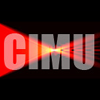
|
Abigail McClintic Affiliate - Research Scientist I amcclintic@apl.uw.edu Phone 206-685-7033 |
Department Affiliation
 |
Center for Industrial & Medical Ultrasound |
Education
B.S. Environmental Health, University of Washington, 2012
|
Publications |
2000-present and while at APL-UW |
Differentiation of burn wounds in an in vivo porcine model using terahertz spectroscopy Osman, O.B., T.J. Tan, S. Henry, A. Warsen, N. Farr, A.M. McClintic, Y.-N. Wang, S. Arbabi, and M.H. Arbab, "Differentiation of burn wounds in an in vivo porcine model using terahertz spectroscopy," Biomed. Opt. Express, 11, 6528-6535, doi:10.1364/BOE.397792, 2020. |
More Info |
1 Nov 2020 |
|||||||
|
The accuracy of current burn triage techniques has remained between 50–70%. Accordingly, there is a significant clinical need for the quantitative and accurate assessment of partial-thickness burn injuries. Porcine skin represents the closest animal model to human skin, and is often used in surgical skin grafting procedures. In this study, we used a standardized in vivo porcine burn model to obtain terahertz (THz) point-spectroscopy measurements from burns with various severities. We then extracted two reflection hyperspectral parameters, namely spectral area under the curve between approximately 0.1 and 0.9 THz (–10 dB bandwidth in each spectrum), and spectral slope, to characterize each burn. Using a linear combination of these two parameters, we accurately classified deep partial- and superficial partial-thickness burns (p = 0.0159), compared to vimentin immunohistochemistry as the gold standard for burn depth determination. |
|||||||||
Mice exposed to diagnostic ultrasound in utero are less social and more active in social situations relative to controls McClintic, A.M., B.H. King, S.J. Webb, and P.D. Mourad, "Mice exposed to diagnostic ultrasound in utero are less social and more active in social situations relative to controls," Autism Res., 7, 295-304, doi:10.1002/aur.1349, 2014. |
More Info |
1 Jun 2014 |
|||||||
|
Clinical use of diagnostic ultrasound imaging during pregnancy has a long history of safety and diagnostic utility, as supported by numerous human case reports and epidemiological studies. However, there exist in vivo studies linking large but clinically relevant doses of ultrasound applied to mouse fetuses in utero to altered learning, memory, and neuroanatomy of those mice. Also, there exists a well-documented significant increase in the likelihood of non-right-handedness in boys exposed to diagnostic ultrasound in utero, potentially relevant given the increased prevalence of autism in males, and reports of excess non-right-handedness in this population. Motivated by these observations, we applied 30 minutes of diagnostic ultrasound to pregnant mice at embryonic day 14.5 and assayed the social behavior of their male pups 3 weeks after their birth. The ultrasound-exposed pups were significantly (P < 0.01) less interested in social interaction than sham-exposed pups in a three-chamber sociability test. In addition, they demonstrated significantly (P < 0.05) more activity relative to the sham-exposed pups, but only in the presence of an unfamiliar mouse. These results suggest that fetal exposure to diagnostic ultrasound applied in utero can alter typical social behaviors in young mice that may be relevant for autism. There exist meaningful differences between the exposure of diagnostic ultrasound to mice versus humans that require further exploration before this work can usefully inform clinical practice. Future work should address these differences as well as clarify the extent, mechanisms, and functional effects of diagnostic ultrasound's interaction with the developing brain. |
|||||||||
Rapid ultrasonic stimulation of inflamed tissue with diagnostic intent McClintic, A.M., T.C. Dickey, M. Gofeld, P.R. Illian, M. Kliot, J.C. Kucewicz, J.D. Loeser, P.G. Richebe, and P.D. Mourad, "Rapid ultrasonic stimulation of inflamed tissue with diagnostic intent," J. Acoust. Soc. Am., 134, 1521-1529, doi:10.1121/1.4812872, 2013. |
More Info |
1 Aug 2013 |
|||||||
|
Previous studies have observed that individual pulses of intense focused ultrasound (iFU) applied to inflamed and normal tissue can generate sensations, where inflamed tissue responds at a lower intensity than normal tissue. It was hypothesized that successively applied iFU pulses will generate sensation in inflamed tissue at a lower intensity and dose than application of a single iFU pulse. This hypothesis was tested using an animal model of chronic inflammatory pain, created by injecting an irritant into the rat hind paw. Ultrasound pulses were applied in rapid succession or individually to rats' rear paws beginning at low peak intensities and progressing to higher peak intensities, until the rats withdrew their paws immediately after iFU application. Focused ultrasound protocols consisting of successively and rapidly applied pulses elicited inflamed paw withdrawal at lower intensity and estimated tissue displacement values than single pulse protocols. However, both successively applied pulses and single pulses produced comparable threshold acoustic dose values and estimates of temperature increases. This raises the possibility that temperature increase contributed to paw withdrawal after rapid iFU stimulation. While iFU-induction of temporal summation may also play a role, electrophysiological studies are necessary to tease out these potential contributors to iFU stimulation. |
|||||||||




